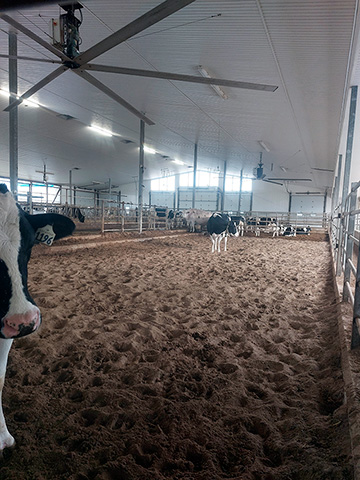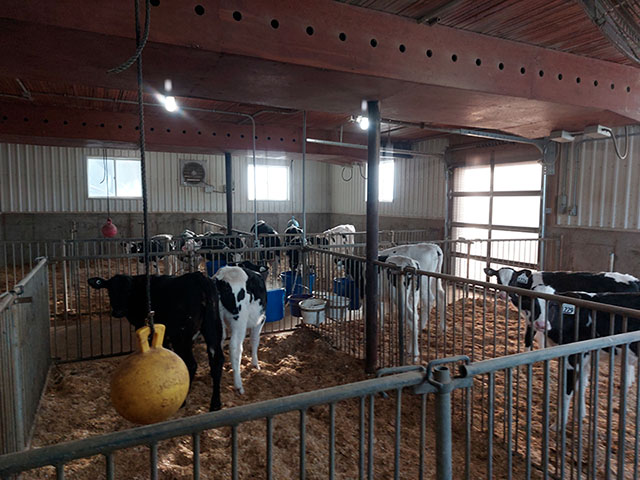Age at First Calving: Successes at Wardway Farms
- May 2, 2023
Age at First Calving (AFC), defined as the average age of first calving (in months) for the herd in the target year, is the third component of Lactanet’s Herd Performance Index (HPI).
Assigned 100 points out of 1000, it’s relative to heifer management, reproductive planning, and Average Daily Gain (ADG) of young animals in the herd.
Age at First Calving is the average age (expressed in months) of all animals with valid birth and calving dates that started their first lactation in the herd during the target year.
Data shows that a lower AFC not only cuts heifer rearing costs but allows animals to hit an earlier breakeven age. An optimal AFC balances early financial return with optimal future production and performance; it is a topic that contains much nuance and has been discussed before in detail.
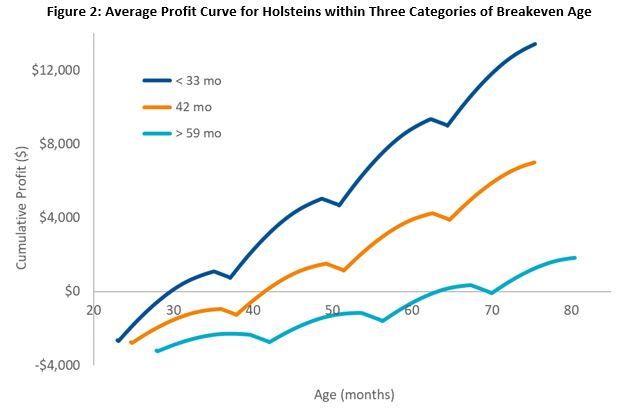
Wardway Farms, owned by Chris Ward, Melissa Ward, and family, has an average Age at First Calving of 21.4 months. For them, this strikes the balance of early breakeven age and mature performance. The Holstein herd located in Woodstock, Ontario, milks 85 animals and manages an average of 9,270 kg of milk (257 BCA) and 426 kg of fat (310 BCA) per lactation from their first-lactation animals. This outstanding performance continues into maturity, with the 3rd lactation and older animals making up 43% of the herd and averaging 588 kg of fat (324 BCA) per lactation.
For Wardway Farms, it’s not simply about reaching the lowest possible AFC, but rather encouraging the highest performance possible across all stages of life.

With an intense breeding program based on income by animal, Herd Life, and Fat and Protein traits, the genetic ceiling is set very high from the beginning: the herd breeds their bottom 55% to beef, and the top 45% to sexed semen. To better rank them, all heifers are genomically tested from birth. Chris elaborates:
“Every heifer on the farm should be our best investment possible, born from the best cows in our herd, and genomics helps us select that top end with accuracy. We also check dam and grand-dam performance relative to the herd to further inform selection.”
Once born, calves are fed high-quality colostrum as soon as possible. The farm tests the quality with a Brix refractometer, and anything under 23% Brix is supplemented or substituted with powdered colostrum. Afterwards, the next 3-4 feedings are dam’s milk before transitioning fully to milk replacer.
Calves are housed individually for the first few weeks of life before being moved to age-based pairs and small groups. This research-backed[1] recommendation supports overall social contact, feeding ambition and confidence. In addition, the farm offers the calves enrichment toys like Jolly balls. Chris notes that they do well in this environment and go on to keep up with what he describes as an aggressive program: in the summer the farm offered 26/17 (P/F) milk replacer fed thrice daily, and a high-protein (24%) pelleted calf starter with straw mixed in, as well as free-choice water. For the winter, a higher-fat milk replacer at 24/20 is normally used.
Their weanling and heifer program is just as ambitious, with measured nutritional transitions that keep the calves eating well at all stages until they are fully consuming TMR at around 8.5 months.
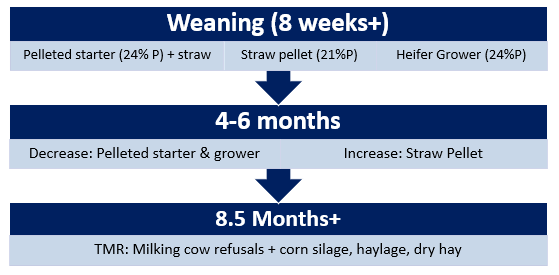
Chris says the success of the program is all in balance:
“We have no issues with over-conditioning—we feed them high energy while they’re young, but with high protein so it supports their growth when they need it most.”
They grow so well that by 10 months, most heifers have reached over half their mature body weight and are showing strong and regular heats. While having a low AFC is important to the farm for multiple reasons, they constantly evaluate their heifer breeding program against lactation performance. Chris recalls that previously, when their AFC had been around 20 months, not all of the heifers could keep up with the demands of lactation. Since then, the farm has adjusted to a 21–22-month range and has found it to be more optimal for long-term performance.
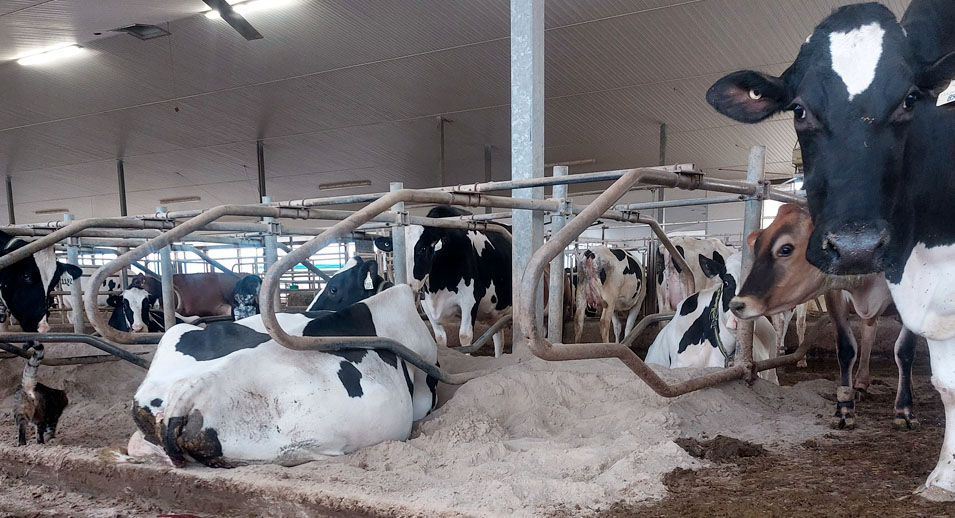
This means breeding currently begins around 11 to 12 months, but it will depend on the animal. A balance of size, weight and overall age determine the timing of their first breeding—the only constant is that each heifer gets 3 chances. Chris elaborates, “I don’t want to be breeding them more than that—they’re young, they’re healthy, and they don’t have any lactation stress. I she isn’t pregnant by 14 or 15 months, unfortunately she has to go.”
Therefore the third breeding, even on top-end heifers, will always be to beef to help with fertility. Even if it means that a heifer cannot pass on her genetic potential for the time being, the farm would rather have a top-producing animal in milk in order to pay back some of her rearing costs.
Overall, their comprehensive approach has been a great success and their first-lactation animals excel well into maturity. When freshening, they’re offered a high-energy TMR with a top-dress of hay until around 50 DIM, at which point they continue solely on the TMR. The herd has found that with this setup, they have minimal instances of ketosis during freshening and into peak lactation.
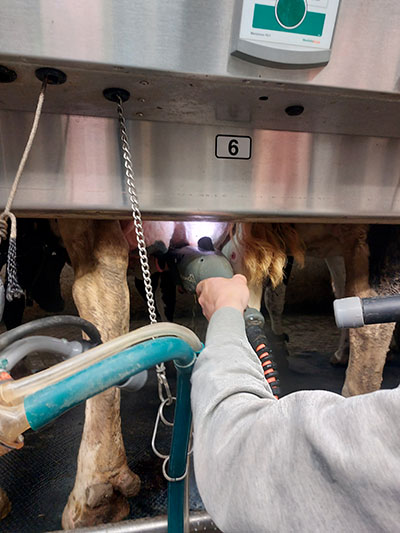
The combination of a well-managed environment, rigorous feeding program, intense genetic selection, and attention to performance details has given Wardway’s animals an edge that allows the herd to maintain a low AFC while keeping health, production and profit high. Chris concludes:
“We strive for perfection, but since there is no such thing, the closest we can get is to always keep improving where we can. We focus a lot on our calves, then on our dry cow and fresh cow program. If those 3 stages go well, everything else follows.”
To check Lactanet’s Age at First Calving benchmarks and other factors by region or milking system and get started on the path to HPI improvement, find our benchmark files here.
To learn more about Lactanet’s Herd Performance Index and see top-performing herds by region, click here.
To learn more about Wardway Farms, read their profile in Lactanet’s 2021 Ontario Progress Report.
Citations
[1] Effects of group housing of dairy calves on behavior, cognition, performance, and health. Journal of Dairy Science vol. 99 no 4, 2453-2467, 2016.


